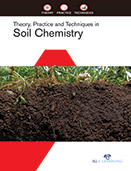Chemistry

The chemistry of the soil is also very important property as this will determine what will grow and how well it will grow. We all know that soil is a key element of agriculture. Without it we wouldn´t be able to grow plants, which are used as food for both humans and animals. This text will focus on the technical side of soil and explain some of its chemical and physical properties. This ability to manage water has a big effect on the biological systems in the soil. The soil’s ability to move water can eliminate water-logged environments which can impact plant roots and the biology around them. Having an ideal percentage of calcium and magnesium in soil is very important. Since the healthiest soils produce the most food, they have also been at the center of the best communities in history. Ancient Egyptians had fresh nutrients delivered to their fields every year by the flooding of the Nile River. This allowed farmers to use the same soils for a very long time. Some other ancient civilizations had soil that was nutrient poor or didn’t hold much water. The health of these soils declined over time, and people had to move away to farm new ground. Calcium and magnesium impact the amount of oxygen in the soil. Oxygen is a necessity to life for the biology that lives in the soil and interacts with the plant. Just like human-beings, plants need oxygen too. Hence, oxygen might be the most important nutrient in the soil.
“Theory, Practice and Techniques in Soil Chemistry” provides a comprehensive view of the chemistry of soil, particularly those aspects connected with the protection of the environment. It covers about environmental pollution, organic and inorganic soil contamination and potential ecological health and environmental health risks. The topic of this book is the quantitative characterization of the chemical reactions taking place in the soil, as well as the properties of main soil components.